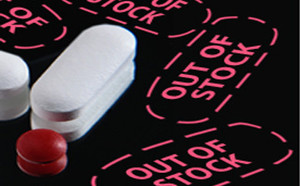The OECD countries spent 4.6% more per capita per year on pharmaceuticals from 1995 to 2005 although the annual average economic growth was only 2.2% during the same period [1].
The pressures for this expenditure to increase are well known, (ageing population, increase in chronic conditions, orphan drugs, biotechnology products, etc.) as are the increasing pressures on governments to reduce expenditure. This article examines the ways in which European countries try to restrain pharmaceutical price inflation. Is there a sure-fire way of controlling this cost?
Pricing policies outlined
A minority of countries adopt a free market approach to medicines prices [2]. In this competition is used to drive down prices. This approach assumes no financial incentives to prescribe any particular brand, so it does not work in many systems. It also assumes a large patient base, so there is room for competition. If fewer people can afford treatment in a poorer or smaller country a fixed price system will tend to work better.
Penetration of generic medicines is more successful in countries that permit (relatively) free pricing of medicines than in countries that have price regulation [3, 4]. Originator brands are more highly priced, allowing generic competition to develop once patents have expired. The price difference between originator and generic medicines tends to be higher and generics in time also bring down the price of the originator medicines [5].
This approach has the advantage of encouraging both an originator and generic pharmaceutical industry, benefitting the country’s economy. A drawback is that because of the competitive nature of the market, some of the price reductions won are in the form of discounts on artificially inflated prices. Therefore, this system is not transparent, in other words, it is difficult to gauge exactly what is happening [6]. France, The Netherlands and UK are examples of this approach.
The majority of European countries use one of two regulated price approaches. Regulation drives down the price of the originator medicine, but this discourages market entry of generic medicines. The limited penetration of generic medicines in such markets limits price competition once the patent has expired.
Under price cap regulation, the regulator sets a maximum price that can be charged for each medicine. This limits the prices of originator and generic medicines but scarcely encourages competition. No additional price reductions are gained beyond those imposed by regulation [7].
Reference pricing stimulates generic competition to a greater extent and leads to lower prices than price cap regulation [8]. The reference price is calculated as a function of the market prices of medicines. If there is a large market, competition drives down the ‘reference’ prices [9, 10]. Recently, several governments have imposed price reductions and these will affect reference prices in other countries.
A third way to encourage lower prices is tendering. This is being introduced for ambulatory care by health insurance companies, particularly in Denmark, Germany, and The Netherlands. It has achieved cost savings in the short term with a significant reduction in generics’ prices. Small companies are favoured. However, a negative impact on the economy is predicted in the long term and in the short term shortages arise [11].
Comment
There is no one system that suits all countries, so it is only possible to compare them, but not to design a ‘best’ system. Since prices of generic medicines vary substantially between European countries it is clear that the situation is not ideal. A recent Norwegian report put prescription drug prices in Norway, Sweden and UK at the lowest among those nations surveyed, while the most expensive were in Belgium, Germany and Ireland [12]. The potential savings to healthcare payers and patients from generic medicines are not fully realised in Europe.
Related articles
Pricing strategies in generic medicines
International trends in generics: the EU
Are generic medicines in Europe too expensive?
References
1. OECD Health at a glance 2007.
2. European Generic Medicines Association. 2008 Market Review.
3. Martikainen J, Kivi I, Linnosmaa I. European prices of newly launched reimbursable pharmaceuticals – a pilot study. Health Policy. 2005;74(3):235–46.
4. Schulz A. Evolving dynamics of US and European generics markets. J. Generic Med. 2004;2(1):23–32.
5. De Joncheere K, Rietveld AH, Huttin C. Experiences with generics. Int J Risk Safety Med. 2002;15(1-2):101–9.
6. Dylst P, Simoens S. Generic Medicine Pricing Policies in Europe: Current Status and Impact. Pharmaceuticals. 2010;3:471–81.
7. Puig-Junoy J. Impact of European pharmaceutical price regulation on generic price competition: a review. Pharmacoeconomics. 2010;28(8):649–63.
8. Brekke KR, Grasdal AL, Holms TH. Regulation and pricing of pharmaceuticals: Reference pricing or price cap regulation? Eur Econ Rev. 2009;53(2):170–185.
9. Bergman MA, Rudholm N. The relative importance of actual and potential competition: Empirical evidence from the pharmaceuticals market. J Ind Econ. 2003;51(4):455–67.
10. Ghislandi S, Krulichova I, Garattini L. Pharmaceutical policy in Italy: Towards a structural change? Health Policy. 2005;72(1):53–63.
11. Price Waterhouse Coopers. Ontario Public Drug Programs Competitive Agreement Initiative.
12. Norwegian Pharmaceutical Association report 2008. www.apotek.no/








 0
0











Post your comment